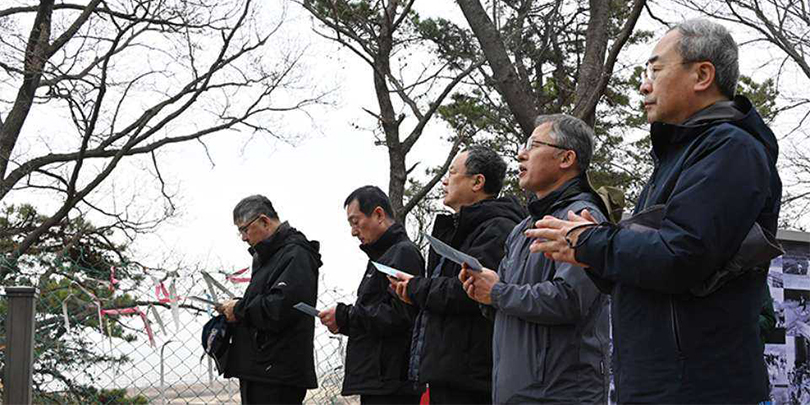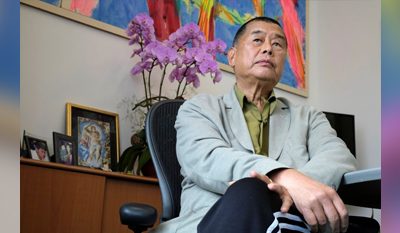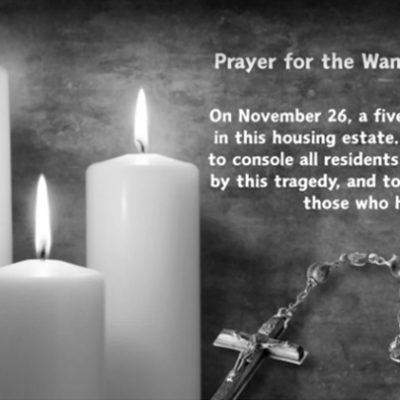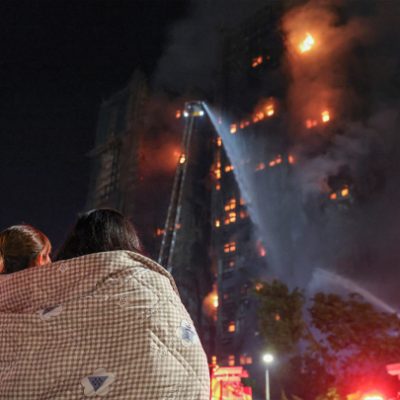
Eight decades after the partition of the Korean peninsula, the Catholic Church in South Korea is keeping alive the hope for reconciliation between the two countries. Source: CNA.
“Hatred and suspicion can never be a solution,” Bishop Simon Kim Jong-Gang, president of the Korean Reconciliation Commission said in an interview with ACI Prensa.
Last month, the Korean bishop led a pilgrimage to Kyodong Island on the border with North Korea in a gesture that highlighted the Church’s commitment to reconciliation between the two countries.
The bishops walked along the three-mile barbed-wire fence on the island that has divided the two countries since the Korean War (1950–1953) and prayed that the two countries would put their differences behind them.
For 80 years, soldiers on both sides of the demarcation line at the Panmunjom Peace Village in the Demilitarized Zone between the two Koreas have stood guard face to face, armed and under the pressure that any minor incident could trigger a new war.
In 2018, as part of agreements between the two countries to build mutual trust, the Joint Security Area was cleared of firearms and military posts.
But this openness was short-lived. In early 2020, North Korea closed its borders due to the COVID-19 pandemic and again ordered its soldiers to shoot at any movement across the border.
Bishop Kim noted that there are no exchanges between South and North Korea.
“It’s impossible to meet people, exchange letters or phone calls, or even send emails between the two sides of Korea.”
Indeed, since the failure of the diplomatic process that attempted to reestablish communications between North Korea and the United States in 2019 and the closure of borders due to the pandemic, isolation has become total.
“In the past five years, South Korea and North Korea have not had any official exchanges, either at the governmental or civil level,” the bishop lamented. Before that, “there were some meetings and some correspondence, but lately there has been no news.”
During the pilgrimage, the bishop said he could “easily see the other side.”
“I always experience the same feeling when walking along the barbed-wire fence. The South and the North are really close,” he explained.
This walk for peace gave him a certain sense of closeness. “If someone on the other side had shouted, I would have been able to hear it. I hope that trust between the South and the North will be restored as soon as possible,” he remarked.
FULL STORY
Church in Korea keeps up quest for reconciliation between the peninsula’s two nations (By Victoria Cardiel, CNA)





